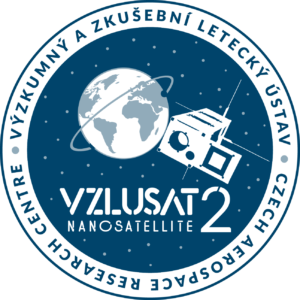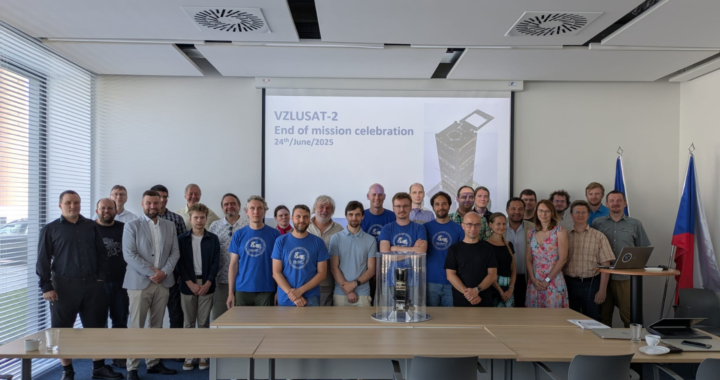At VZLU AEROSPACE in Prague, Letňany, subcontractors, and partners of the VZLUSAT-2 mission gathered at the end of June. VZLU AEROSPACE is where the satellite was integrated and later launched into space on January 13, 2022, from Cape Canaveral, USA, by SpaceX’s Falcon 9 rocket. VZLUSAT-2 remains active, but due to increased solar activity and atmospheric drag, its orbit is gradually lowering. It is expected to deorbit and burn up in the atmosphere in the coming months, similar to other nanosatellites in orbit.
A 1:1 scale model of the spacecraft is on display at VZLU AEROSPACE’s headquarters in Prague, Letňany. During its successful mission, VZLUSAT-2 became the first Czech satellite to take high-resolution images.
„VZLUSAT-2 was a significant milestone for the development of satellites at VZLU AEROSPACE. With this satellite, we have proved our capabilities and technologies, which we apply to other missions. It has also demonstrated that the Czech Republic can design and operate its own satellites,“ stated Josef Kašpar, the CEO of VZLU AEROSPACE.
The VZLUSAT-2 spacecraft is equipped with numerous scientific instruments, which have tested new technologies and contributed to research in outer space. One of these instruments is the Gamma Flash Detector (GRB).
„The GRB detector was developed at the Konkoly Observatory in Hungary, and data analyses are being conducted at Masaryk University. This experiment has proven that nanosatellites can be used for routine detection of energetic gamma flashes, which accompany the formation of black holes in distant space,“ explained András Pál, lead researcher from the Hungarian Academy of Sciences.
Another crucial instrument was the X-ray optical payload developed by teams from RITE/Rigaku and ADVACAM. „The X-ray optical payload on the VZLUSAT-2 satellite has provided us with valuable experiences in development, testing, and operation under real conditions. It has shown that even in a very short time, we can build and test devices in a way that lab tests cannot replicate. Despite some complications, the payload continues to function in orbit, demonstrating that improvisation, dedication, and solid design can withstand the challenges of space,“ described Veronika Maršíková, leader of the research team. Carlos Granja from the same team added, „This mission allowed us to test new technologies, which gives us a reliable foundation for future missions.“
Additionally, the satellite included a Space Dosimetry System Demonstrator (2SD) for measuring charged particles, a Space X-ray Detector (SXD) that explored soft X-rays, and a Water Vapor Outgassing (DPTWI) sensor that monitored material behavior in a vacuum.
The University of West Bohemia in Pilsen played a vital role in maintaining communication with the spacecraft throughout its operation. „For UWB, being part of the VZLUSAT-2 mission was an honor, contributing to the realization and launch of the first Czech nanosatellite. In Pilsen, we established a fully functioning ground station based on Software-Defined Radio (SDR), which managed all mission commands and communications with the satellite. We also involved students in this project as part of their bachelor, master, and doctoral theses,“ said Jiří Masopust from UWB.
The mission of VZLUSAT-2 continues the tradition of successful Czech satellites, following in the footsteps of VZLUSAT-1, the longest-communicating Czech satellite. This legacy is carried on by other missions such as SATurnin-1, AMBIC, QUVIK, and VZLUGEM, which are advancing the Czech Republic’s sovereign space program.
- VZLUSAT-2 setkání
- VZLUSAT-2 setkání
- VZLUSAT-2 setkání
- VZLUSAT-2 setkání
- VZLUSAT-2 setkání
- VZLUSAT-2 setkání
- VZLUSAT-2 setkání









